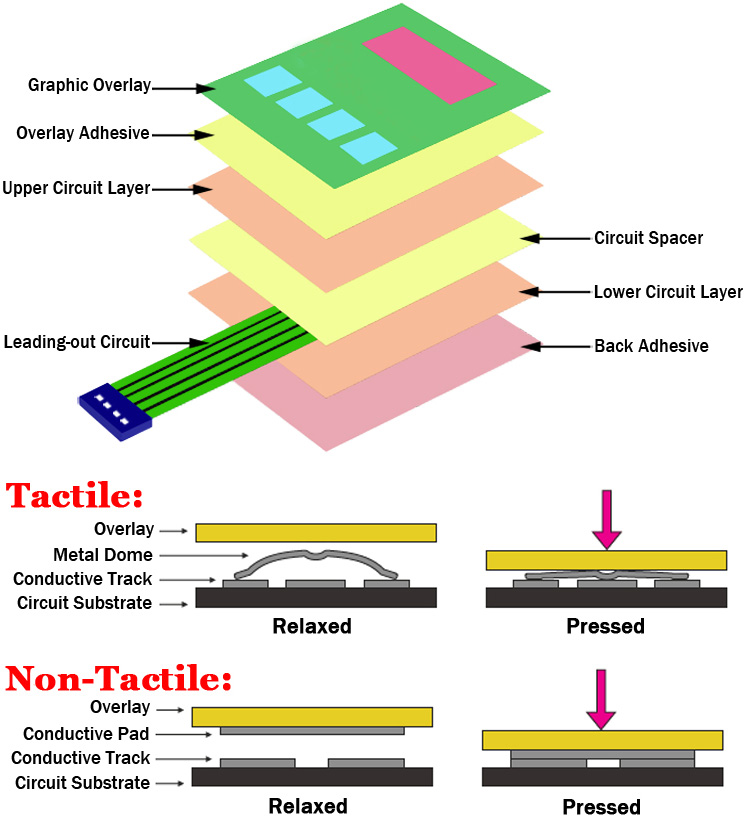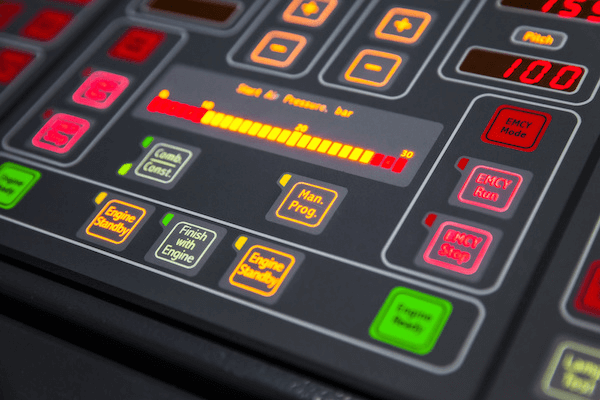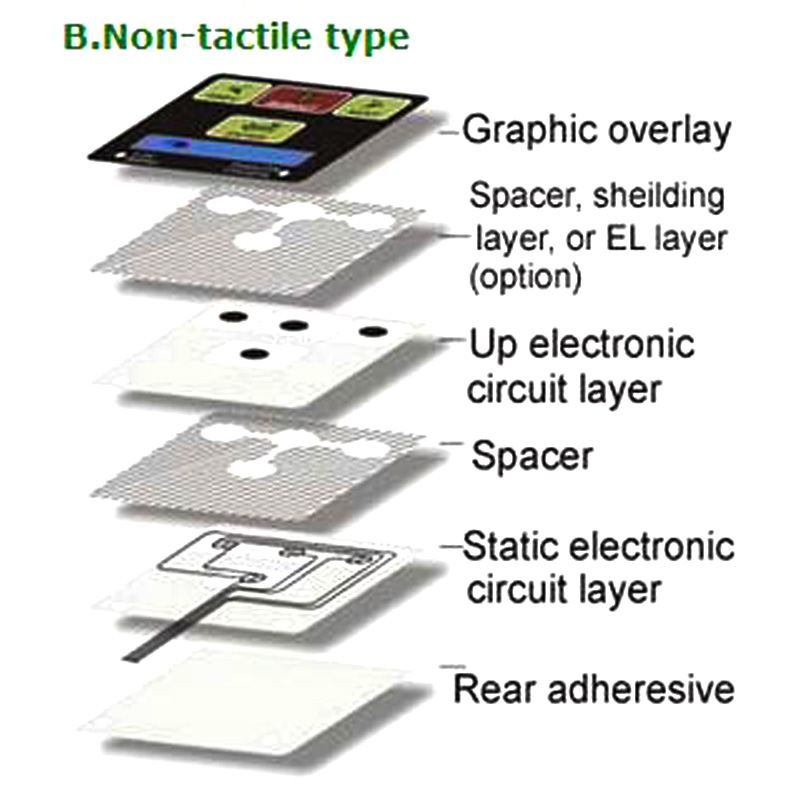The Manufacturing Refine Behind Membrane Switch Over: What You Need to Know
The production process behind membrane layer switches combines mindful design, product selection, and top quality control. It begins with recognizing the complexities of membrane layer switch layout and progresses via various phases, consisting of material options and printing techniques. Each phase plays an essential function in guaranteeing performance and resilience. The intricacies of layer construction and the extensive screening criteria may expose understandings that are not immediately obvious. What exists past these fundamental elements?
Comprehending Membrane Layer Switch Over Design
Although membrane switches might show up straightforward initially glimpse, their style entails detailed considerations that guarantee functionality and toughness. The design process begins with a complete understanding of customer requirements, including the user interface's intended application and ecological variables. Ergonomics is a crucial element, as the layout must help with ease of use while ensuring that responsive responses satisfies individual expectations.Moreover, the layering of elements, such as graphic overlays, adhesive layers, and conductive traces, must be specifically crafted. membrane switch. This layered configuration not just affects the button's responsiveness however also impacts its long life. Interest is provided to the sealing strategies used to shield versus moisture and dirt, which might jeopardize performance. In addition, style considerations reach visual appeals, where color pattern and visual clarity improve user experience. Ultimately, the layout of membrane switches over equilibriums functionality, customer experience, and toughness, guaranteeing that they fulfill the needs of various applications properly
Materials Made Use Of in Membrane Switch Over Manufacturing
When selecting products for membrane layer button production, it is necessary to contemplate both efficiency and resilience. The key materials consist of polyester and polycarbonate films, which give flexibility and toughness. These films are commonly coated with sticky to assure proper bonding to substratums. Conductive inks, generally made up of silver or carbon, are crucial for producing electric connections within the button, enabling dependable operation.Additionally, a safety layer, such as a tough coat, is regularly put on boost scratch resistance and durability. The option of backing material, such as acrylic or foam, can significantly influence the button's tactile feel and general customer experience. Moreover, numerous environmental elements, consisting of temperature level and moisture, should direct product option to guarantee peak performance in certain applications. Inevitably, the appropriate combination of materials contributes to the membrane layer button's performance and life-span, making educated selections crucial for producers.
The Printing Process: Creating Graphics and Text
The printing process in membrane switch manufacturing plays a significant role in producing top quality graphics and text. Different graphic design techniques are employed to assure aesthetic allure and capability, while mindful ink option techniques are necessary for toughness and efficiency. Comprehending these aspects is fundamental for accomplishing finest results in membrane button style.
Graphic Design Techniques
Graphic design strategies play an essential duty in the printing process of membrane buttons, as they define just how graphics and text will inevitably appear on the last item. Efficient graphic layout entails the critical use of fonts, layouts, and colors to improve readability and aesthetic charm. Designers usually use vector graphics for scalability, ensuring that pictures continue to be sharp at various dimensions. Furthermore, focus to contrast and placement is vital, as it affects customer communication and aesthetic high quality. The unification of branding elements, such as logo designs, have to be handled with like keep brand honesty. In general, thoughtful visuals layout techniques contribute substantially to the functionality and beauty of membrane layer switches, affecting customer experience and product performance.
Ink Choice Techniques
Picking the appropriate ink is vital for attaining the desired aesthetic top quality and resilience in membrane layer switch production. Various ink types are made use of, including solvent-based, water-based, and UV-curable inks. Each type provides distinctive qualities, such as resistance, bond, and versatility to environmental elements. Solvent-based inks are typically preferred for their resilience and dynamic colors, while water-based inks are much more environmentally friendly but might have constraints in attachment. UV-curable inks offer fast curing and robust efficiency. In addition, shade matching methods guarantee that the selected inks line up with layout requirements. Eventually, the option of ink should consider factors such as application approach, substratum compatibility, and end-use demands to accomplish remarkable results in membrane button graphics and text.
Layer Construction and Setting Up

Material Selection Process
A cautious option of materials is vital in the manufacturing procedure of membrane layer switches, as it directly influences performance and toughness. The key materials utilized include polyester, polycarbonate, and various conductive inks. Polyester is typically favored for its outstanding resistance to chemicals and abrasion, making it appropriate for severe atmospheres. Polycarbonate, on the other hand, offers remarkable quality and effect resistance, which is useful for applications needing exposure and robustness. Conductive inks, generally composed of silver or carbon, are vital for developing trusted electrical pathways. In addition, the selection of sticky materials impacts the total stability of the switch - membrane switch. Evaluating factors such as environmental exposure, responsive comments, and aesthetic needs overviews producers in selecting the most effective products for their particular applications
Layer Bond Techniques
Sticking layers in membrane button building and construction is an important process that assures performance and long life. Different attachment techniques are used to protect perfect bonding in between layers, which usually include making use of adhesives, heat, and stress. Pressure-sensitive adhesives (PSAs) are commonly made use of for their ease of application and prompt bonding capabilities. In addition, thermal bonding methods can be used, where heat is made use of to activate glue residential or commercial properties, safeguarding a strong bond. The selection of adhesion technique largely depends upon the products involved and the certain application requirements of the membrane layer switch. Appropriate alignment and uniform application of adhesives are vital to avoid issues, securing the switch runs effectively throughout its designated lifespan.
Quality Assurance Actions
Guaranteeing high quality control throughout the layer building and construction and assembly of membrane buttons is crucial for maintaining efficiency and dependability. This process generally includes several critical measures, including complete inspections at each stage of production. Producers use innovative screening approaches, such as peel examinations and adhesion assessments, to verify the honesty of layer bonds. Additionally, visual inspections are conducted to identify any problems in printing or material variances. Ecological problems, such as temperature level and moisture, are meticulously monitored to assure ideal curing and attachment. Moreover, regular calibration of tools aids maintain precise production criteria. By applying these quality assurance actions, suppliers can substantially lower the danger of product failure, assuring that the last membrane switches fulfill the needed specs and client expectations.
Examining and Top Quality Control Steps

Technologies in Membrane Layer Switch Technology
As innovations in innovation continue to advance, membrane buttons are taking advantage of ingenious developments that boost their performance and customer experience. One significant development is the assimilation of capacitive touch innovation, which allows for even more user-friendly and responsive interface. This change not just improves appearances however also lowers mechanical deterioration, expanding the lifespan of the switches.Additionally, innovations in graphic overlay products have caused improved toughness and resistance to environmental aspects such as dampness and UV light. These materials now supply improved clarity and brightness, more elevating the visual appeal.Furthermore, the unification of clever technology is changing membrane layer switches into interactive control board, making it possible for connectivity with IoT tools. This connection fosters a seamless individual experience, leading the way for applications in various markets, from medical care to customer electronic devices. Collectively, these technologies position membrane changes as essential components in modern device style.
Often Asked Inquiries
How much time Does the Membrane Layer Switch Manufacturing Process Take?
The duration of the membrane switch manufacturing process can vary significantly. Aspects such as intricacy, products made use of, and manufacturing quantity impact timelines, with typical manufacturing varying from a couple of days to numerous weeks for conclusion.
What Are the Usual Applications for Membrane Layer Buttons?
Membrane layer switches are typically used in different sectors, consisting of vehicle controls, family home appliances, medical gadgets, and consumer electronics (membrane switch). Their versatility and durability make them ideal for applications requiring straightforward user interfaces and reliable performance in varied settings
Can Membrane Changes Be Personalized for Certain Requirements?

What Is the Life-span of a Typical Membrane Change?
The life expectancy of a typical membrane layer button differs, yet generally, it ranges from 1 to 5 million cycles. Elements such as usage, atmosphere, and material high quality substantially affect toughness and total efficiency with time.

Are Membrane Layer Changes Eco-friendly?
The environmental friendliness of membrane layer switches over differs. Some materials used might not be recyclable, while others can be environment-friendly. The general link effect depends on making materials and techniques, demanding cautious consideration throughout choice and disposal. The manufacturing procedure behind membrane layer switches combines cautious design, product choice, and quality control. It starts with comprehending the complexities of membrane button design and proceeds with various phases, including product selections and printing methods. When selecting products for membrane button manufacturing, it is essential to ponder both performance and longevity. A cautious selection of products is important in the production process of membrane layer buttons, as it directly affects capability and sturdiness. The choice of bond approach mostly depends on the products involved and the details application requirements of the membrane layer switch.